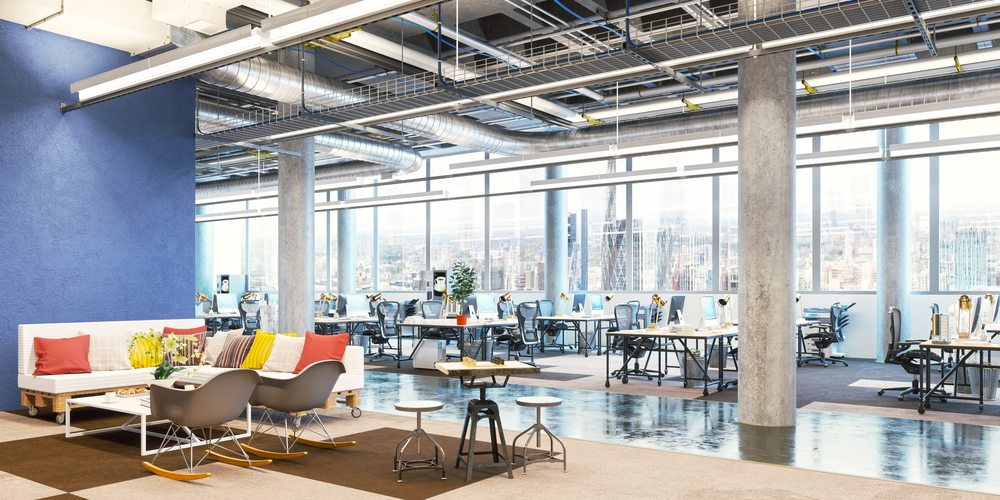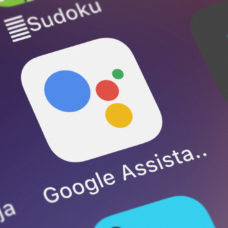Does your current workspace have a desk, a chair, and a computer?
Maybe it has a conveyor belt and protective gear that everyone wears. Maybe your workspace is a shared office that you rent with friends. But regardless of where you work looks like now, in the future, you’ll be “on that grind” in coworking space.
Perhaps with this in mind, Amazon debuted “Spheres” which are a large set of dome-shaped workspaces. John Schoettler, VP of Corporate Real Estate and Facilities, says “a link to nature” is missing in most modern workspaces.
This got us thinking about next-gen workspaces. What will a next generation (not Star Trek) workspace look like?
A Coworking Space with Nature in Amazon Spheres
First of all, the Amazon Spheres complex is a “trio of spheres” that look like a Gotham-ized version of the Spaceship Earth at the Epcot Center in Walt Disney World Resort. That isn’t to say that the Spheres don’t look totally futuristic–it’s just that segmented domes = the Spaceship Earth.

Amazon’s domes have a total of 2,600 five-sided glass panels. These pentagonal hexecontahedrons have 72 faces and have a coating that reflects sunlight. But, the coating also allows enough light penetration for plant photosynthesis.
And, photosynthesize they do. You will find vegetation of more than fifty countries in the Spheres with LED lighting and light sensors, too. Amidst the flora will be seating or space for up to 800 fauna–or, uh, people.
A temperature regulator will maintain a 60% humidity level during the day. It will also maintain a ~72 degrees Fahrenheit/22 degree Celsius temperature.
Amazon claims that this is for their employees, as well as the environment. But is this the future of next-gen workspaces?
The 9,000 Trees of Apple Park
While Amazon might be the first to build an indoor rainforest, Apple Park in Cupertino, California is a tied-to-nature workspace (and Apple Headquarters). Debuting in April 2017, Apple Park has all-glass walls and doors, and over 9,000 indigenous trees of 300 varieties.

When Steve Jobs first presented the plans to Cupertino City Council, he said: “Today, about 20 percent of the space is landscaping, most of it is big asphalt parking lots. We want to completely change this and make 80 percent of it landscaping . . . And you can see what we have in mind. Today there are 3,700 trees on the property, we’d like to almost double that.”
Obviously, they did double that. And they built a pond in the middle of it. I suppose it’s a good thing that the biggest tech companies are taking charge in the evolution of the workplace and coworking space.
Aesthetics Are Nice, Next-Gen Coworking Space Should be Functional
This coworking space might not be “next-gen” material in your mind, but it’s just one Google office.
Known for having unique workspaces, all of Google’s global offices are different from one another. For instance, the one in Tel Aviv has a Pac-Man theme and Mountain View, California has a bowling alley.
The locations and the interior design aren’t what make these workspaces next-generation. Even Amazon’s environment-conscious Spheres are mostly just for show. Both companies also still subscribe to more traditional office settings with actual offices.
Who needs an office suite when you can set up a home office? Who needs a workspace email login when you can use Google services? And why look for office space for rent when you can join a community coworking space?
Fact is, next-gen workspaces will be about more than just nap rooms and duck ponds.
Office Suites of the Future: Cubicles or Coworking Space, or Both?
Open office concept designs are far from being new these days. When did this open space look particularly futuristic or “next-gen”?

With millennials dominating the modern workforce, workplaces are drastically changing. The younger generation needs less space (good luck finding a 1 bedroom apartment while working at the Amazon Spheres in Seattle).
Due to the wider availability and decreased cost of technology, machines of industry need less space too. Hence, smaller work areas, and in some cases, more room to breathe.
Still, there are plenty of articles trying to claim that cubicles are better than open office concepts. The main argument exists around “space” and “privacy” and how cubicles offer more of both. Take this with the fact that American workers ranked third globally as the most productive workers in 2016.
What most people fail to see about the cubicle vs open office debate is that it isn’t about “privacy.” It is about the comfort of knowing that if your boss sees what you’re doing, you won’t get punished for it.
It is about generating a coworking space that facilitates trust and camaraderie rather than competitive paranoia. This is the biggest change open office or cubicle concept offices will see in next-gen workspaces.
This shift from productivity over quality of life to the opposite informs every other aspect of future office space for rent. Of course, you might not need an office suite of your own.
Future Tech in a Coworking Space
Technology is usually the “wow” factor of the future of next-gen workspaces. We all want to be Tom Cruise in Minority Report flinging around images. But, how realistic is that in a modern office coworking space?
A gesture-based user interface as seen in Minority Report or Syfy’s Incorporated isn’t far off. If Magic Leap One pans out, we’ll be getting close. Of course, you can imagine how prohibitively expensive this tech might be at the outset.
Read More: Why Magic Leap is Set to Fail
Hopefully, the democratization of future workplace tech means that a coworking space can spread out that cost. In the same way that creative spaces do now, people can rent time on new tech.
Right now, a coworking space offers space, computers, streaming equipment, and software.
In next-gen workspaces, you’ll probably be able to strap on a rental mixed reality headset to get your work done. It might include large-scale 3D printers for further democratization of medicine.
It might even include a rental of autonomous tech like driverless cars. Just maybe not Uber’s.
Read More: Uber Halts Self-Driving Car Program After a Fatal Crash Kills Pedestrian
But what this future tech sharing of a coworking space or futuristic office suites indicates is a priority shift. So what will future next-gen workspaces prioritize?

Future Workplace Philosophy
Here at Edgy Labs, we are early adopters, as well as innovators. When we talk about next-gen workspaces, it’s something we hope to contribute to positively.
Most of us all live in various places all over the world. For instance, I am based in Texas, but my editorial chief is based in Europe. Nonetheless, we still talk face-to-face every day.
Other members are based in Ireland, India, and the Philippines just to name a few.
This globalist approach means that we can develop workflows companies in one time zone just can’t work with. It also means that we rely heavily on technology to get our work done.
Using various apps, devices, and very good communication, we make our Edgy Labs ship move. We can work anywhere where there is an internet connection.
But we also focus on four things that inform our entire workplace philosophy:
- Quality of work – always produce the best you can. Be honest if you are struggling
- Efficiency – find ways to streamline work. Use shortcuts, apps, plugins, algorithms, and all tools available to make your workflow faster
- Quality of life – this one might just matter to millennials in the workplace, but we think not. Happy workers produce better work faster. There is evidence to support this, too
- Growth – this is the biggest factor. If you aren’t growing, you’re stagnating and losing
These ideas applied to next-gen workspaces vary by industry. I’m sure you are already thinking of ways to improve your own workflows.
In order to boost growth, be the most efficient, and have great quality across the board, you have to adjust your mindset. Shifting priorities is difficult in certain industries, but it is crucial for next-gen workspaces.
Being open to change means embracing new technologies and admitting your drawbacks.

A Quick and Dirty List of Next-Gen Workspace Traits
Coworking spaces and office suites will evolve to rely on the following aspects:
- A collaborative, flexible environment
- The incorporation and sharing of new technology
- The end of the “silo” which can harm productivity and communication
- Automation where necessary, but focus on people
- Interconnectivity and mobility
- Open concept workspaces or remote workspaces
These factors and a shift in priorities signal that next-gen workspaces will be all about productivity. But that productivity will not come at the cost of quality.



















GET RICH WITH BLANK ATM CARD, Whats app: +18033921735
I want to testify about Dark Web blank atm cards which can withdraw money from any atm machines around the world. I was very poor before and have no job. I saw so many testimony about how Dark Web Online Hackers send them the atm blank card and use it to collect money in any atm machine and become rich I email them also and they sent me the blank atm card. I have use it to get 500,000 dollars. withdraw the maximum of 5,000 USD daily. Dark Web is giving out the card just to help the poor. Hack and take money directly from any atm machine vault with the use of atm programmed card which runs in automatic mode.
You can also contact them for the service below
* Western Union/MoneyGram Transfer
* Bank Transfer
* PayPal / Skrill Transfer
* Crypto Mining
* CashApp Transfer
* Bitcoin Loans
* Recover Stolen/Missing Crypto/Funds/Assets
Email: darkwebonlinehackers @ gmail . com
Telegram or Whats App: +18033921735